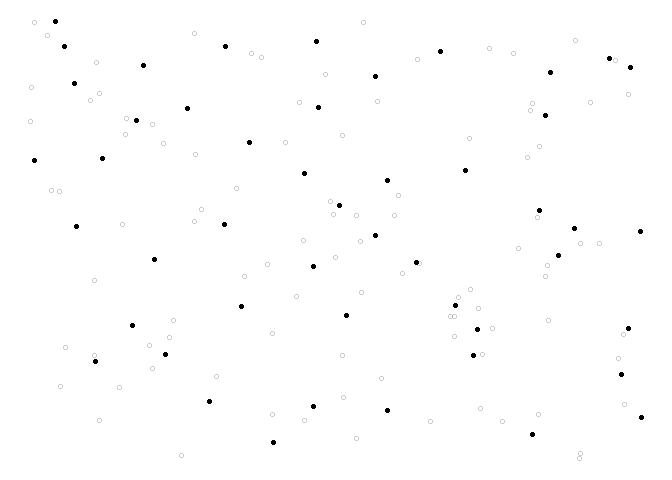Weakly Associated Vectors (WAVE) Sampling.
Weakly Associated Vectors (WAVE) Sampling
Spatial data are generally auto-correlated, meaning that if two units selected are close to each other, then it is likely that they share the same properties. For this reason, when sampling in the population it is often needed that the sample is well spread over space. A new method to draw a sample from a population with spatial coordinates is proposed. This method is called wave (weakly associated vectors) sampling. It uses the less correlated vector to a spatial weights matrix to update the inclusion probabilities vector into a sample. For more details see Raphaël Jauslin and Yves Tillé (2020) https://doi.org/10.1007/s13253-020-00407-1.
Installation
CRAN version
install.packages("WaveSampling")
Latest version
You can install the latest version of the package WaveSampling with the following command:
# install.packages("devtools")
devtools::install_github("Rjauslin/WaveSampling")
Simple example
This basic example shows you how to solve a common problem. Spatial coordinates from the function runif() are firstly generated.
library(WaveSampling)
#> Le chargement a nécessité le package : Matrix
N <- 144
n <- 48
X <- cbind(runif(N),runif(N))
head(X,10)
#> [,1] [,2]
#> [1,] 0.35000373 0.2557976
#> [2,] 0.87553309 0.6370745
#> [3,] 0.09019367 0.9000345
#> [4,] 0.97906235 0.3576902
#> [5,] 0.32768335 0.1444912
#> [6,] 0.41488141 0.5468550
#> [7,] 0.67789730 0.4799551
#> [8,] 0.21604234 0.8712608
#> [9,] 0.38741250 0.6283276
#> [10,] 0.78754375 0.6948966
Inclusion probabilities pik is set up all equal with the function rep().
pik <- rep(n/N,times = N)
It only remains to use the function wave(),
s <- wave(X,pik)
We can also generate a plot to observe the result.
library(ggplot2)
ggplot() +
geom_point(data = data.frame(x = X[,1],y = X[,2]),
aes(x = x,y = y),
shape = 1,
alpha = 0.2)+
geom_point(data = data.frame(x = X[s == 1,1],y = X[s == 1,2]),
aes(x,y),
shape = 16,
colour = "black")+
theme_void()
